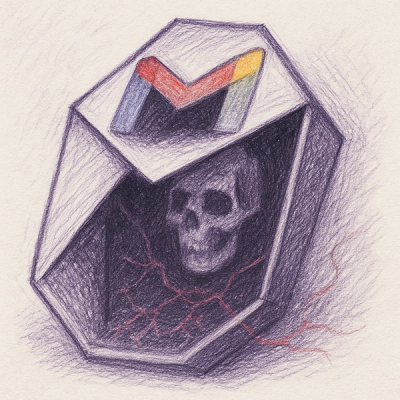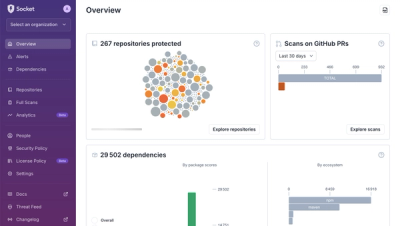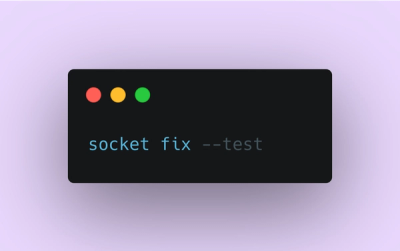
Research
Using Trusted Protocols Against You: Gmail as a C2 Mechanism
Socket uncovers malicious packages on PyPI using Gmail's SMTP protocol for command and control (C2) to exfiltrate data and execute commands.
@hehehai/html-to-image
Advanced tools
A pure JavaScript library which can turn arbitrary DOM node into a vector (SVG) or raster (PNG or JPEG) images. Fork from dom-to-image with more maintainable code and some new features.
npm install --save html-to-image
/* ES6 */
import * as htmlToImage from 'html-to-image';
// or
import { toPng, toJpeg, toBlob, toPixelData, toSvgDataURL } from 'html-to-image';
/* ES5 */
var htmlToImage = require('html-to-image');
All the top level functions accept DOM node and rendering options, and return a promise fulfilled with corresponding dataURL:
Go with the following examples.
Get a PNG image base64-encoded data URL and display it right away:
var node = document.getElementById('my-node');
htmlToImage.toPng(node)
.then(function (dataUrl) {
var img = new Image();
img.src = dataUrl;
document.body.appendChild(img);
})
.catch(function (error) {
console.error('oops, something went wrong!', error);
});
Get a PNG image base64-encoded data URL and download it (using download):
htmlToImage.toPng(document.getElementById('my-node'))
.then(function (dataUrl) {
download(dataUrl, 'my-node.png');
});
Get a PNG image blob and download it (using FileSaver):
htmlToImage.toBlob(document.getElementById('my-node'))
.then(function (blob) {
window.saveAs(blob, 'my-node.png');
});
Save and download a compressed JPEG image:
htmlToImage.toJpeg(document.getElementById('my-node'), { quality: 0.95 })
.then(function (dataUrl) {
var link = document.createElement('a');
link.download = 'my-image-name.jpeg';
link.href = dataUrl;
link.click();
});
Get an SVG data URL, but filter out all the <i> elements:
function filter (node) {
return (node.tagName !== 'i');
}
htmlToImage.toSvgDataURL(document.getElementById('my-node'), {filter: filter})
.then(function (dataUrl) {
/* do something */
});
Get the raw pixel data as a Uint8Array with every 4 array elements representing the RGBA data of a pixel:
var node = document.getElementById('my-node');
htmlToImage.toPixelData(node)
.then(function (pixels) {
for (var y = 0; y < node.scrollHeight; ++y) {
for (var x = 0; x < node.scrollWidth; ++x) {
pixelAtXYOffset = (4 * y * node.scrollHeight) + (4 * x);
/* pixelAtXY is a Uint8Array[4] containing RGBA values of the pixel at (x, y) in the range 0..255 */
pixelAtXY = pixels.slice(pixelAtXYOffset, pixelAtXYOffset + 4);
}
}
});
Get a HTMLCanvasElement, and display it right away:
htmlToImage.toCanvas(document.getElementById('my-node'))
.then(function (canvas) {
document.body.appendChild(canvas);
});
A function taking DOM node as argument. Should return true if passed node should be included in the output. Excluding node means excluding it's children as well.
Not called on the root node.
A string value for the background color, any valid CSS color value.
Width and height in pixels to be applied to node before rendering.
An object whose properties to be copied to node's style before rendering. You might want to check this reference for JavaScript names of CSS properties.
A number between 0 and 1 indicating image quality (e.g. 0.92 => 92%) of the JPEG image.
Defaults to 1.0 (100%)
Set to true to append the current time as a query string to URL requests to enable cache busting.
Defaults to false
A data URL for a placeholder image that will be used when fetching an image fails.
Defaults to an empty string and will render empty areas for failed images.
It's tested on latest Chrome and Firefox (49 and 45 respectively at the time of writing), with Chrome performing significantly better on big DOM trees, possibly due to it's more performant SVG support, and the fact that it supports CSSStyleDeclaration.cssText property.
Internet Explorer is not (and will not be) supported, as it does not support SVG <foreignObject> tag.
Safari is not supported, as it uses a stricter security model on <foreignObject> tag. Suggested workaround is to use toSvg and render on the server.
Only standard lib is currently used, but make sure your browser supports:
<foreignObject> tagThere might some day exist (or maybe already exists?) a simple and standard way of exporting parts of the HTML to image (and then this script can only serve as an evidence of all the hoops I had to jump through in order to get such obvious thing done) but I haven't found one so far.
This library uses a feature of SVG that allows having arbitrary HTML content inside of the <foreignObject> tag. So, in order to render that DOM node for you, following steps are taken:
@font-face declarations that might represent web fonts<style> element, then attach it to the clone<img> elementsbackground CSS property, in a fashion similar to fonts<foreignObject> tag, then into the SVG, then make it a data URL<canvas> element with something drawn on it, it should be handled fine, unless the canvas is tainted - in this case rendering will rather not succeed.Pull requests and stars are highly welcome.
For bugs and feature requests, please create an issue.
FAQs
Generates an image from a DOM node using HTML5 canvas.
We found that @hehehai/html-to-image demonstrated a not healthy version release cadence and project activity because the last version was released a year ago. It has 1 open source maintainer collaborating on the project.
Did you know?

Socket for GitHub automatically highlights issues in each pull request and monitors the health of all your open source dependencies. Discover the contents of your packages and block harmful activity before you install or update your dependencies.

Research
Socket uncovers malicious packages on PyPI using Gmail's SMTP protocol for command and control (C2) to exfiltrate data and execute commands.

Product
We redesigned Socket's first logged-in page to display rich and insightful visualizations about your repositories protected against supply chain threats.

Product
Automatically fix and test dependency updates with socket fix—a new CLI tool that turns CVE alerts into safe, automated upgrades.